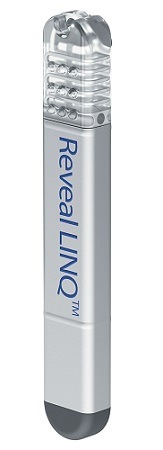
In a study presented yesterday at the International Stroke Conference (ISC; 8–10 February, Dallas, USA), irregular heart rhythms were detected in roughly one in five people who survived an ischaemic stroke due to atherosclerosis and were continuously monitored for three years with an insertable cardiac device.
“We know that about 25% of ischaemic strokes happen in patients who have survived a previous stroke,” said lead study author Lee Schwamm (Harvard Medical School, Boston, USA), who delivered these preliminary late-breaking findings at ISC 2023. “This drives our quest to understand not just the cause of the most recent stroke, but also their risk for future strokes due to all treatable causes, so we can do our best to prevent the next one.”
Survivors of ischaemic strokes that were caused by atherosclerosis of the brain arteries—and not by a blood clot travelling from the heart to the brain—do not typically receive continuous cardiac monitoring after discharge, Schwamm explained. However, unrecognised irregular heart rhythms may increase the risk of another stroke caused by a blood clot formed in the heart that travels to the brain, commonly referred to as a cerebral embolism or embolic stroke.
Schwamm’s ISC presentation pertained to a three-year follow up of the STROKE AF study, which monitored heart rhythms in stroke survivors with atrial fibrillation, the most common type of irregular heart rhythm, for one year.
This multicentre study explored whether the incidence of atrial fibrillation would continue to increase over the full three years of follow up after the first stroke. It included 492 participants who had an ischaemic stroke caused by a clot that formed in a diseased artery, instead of one originating in the heart, and who had no diagnosis of atrial fibrillation. The patients were older, with an average age of 67 years, and more often male (62%) and had multiple vascular risk factors.

Half of the study participants were randomly assigned to receive an insertable cardiac monitor—the Reveal LINQ device (Medtronic)—that recorded heart rhythms 24 hours a day for three years. The other half received standard medical treatment (i.e. no continuous heart monitoring) and follow-up care every six months for three years. Researchers compared the rates of atrial fibrillation detection between patients in both groups.
They found that the continuous cardiac monitoring device detected atrial fibrillation in more than 20% of the participants during the three years after their first stroke. Standard follow-up care detected atrial fibrillation in about 2.5% of participants, representing a 10-fold increased detection rate when using the 24-hour monitoring device.
Furthermore, among participants in whom atrial fibrillation was detected via the insertable cardiac monitor, half experienced an irregular heart rhythm episode of 10 minutes or more, with more than two-thirds of them having an episode lasting longer than one hour.
“It is important to note that six minutes of atrial fibrillation significantly increases risk of stroke,” Schwamm stated.
No significant difference was seen in the rates of recurrent stroke between the two study groups at the three-year mark (17% in the cardiac monitoring group versus 14.1% in the standard care group), although the researchers note that the study was not designed or powered to detect differences in treatments, or clinical outcomes.
“We found that the rate of atrial fibrillation continued to increase over the course of the three years. Therefore, it is not just a short-lived event and self-resolving related to the initial stroke,” Schwamm continued. “Fibrillation is common in these patients. Relying on routine monitoring strategies is not sufficient and neither is placing a 30-day continuous monitor on the patient. Even if fibrillation is ruled out in the first 30 days, most of the cases are missed—because, as we found, more than 80% of the episodes are first detected more than 30 days after the stroke.
“More than 80% of patients in our study did not have any symptoms of fibrillation, we just captured it on the monitor. There is still a lot that we do not yet understand about why people who have had a previous stroke have another one; however, this study contributes important information to one potential cause—namely, unsuspected atrial fibrillation—for some of those 25% of patients with recurrent strokes.
“These patients are at increased risk of recurrent strokes due to their known vascular risk factors, such as hypertension, and elevated cholesterol and blood pressure. What we need to sort out is: what additional risk does atrial fibrillation add? And, can the use of anticoagulation reduce that risk, especially for the type of major and disabling strokes that are often associated with atrial fibrillation?”
Schwamm also noted the study’s major limitation—that being that the full clinical significance of atrial fibrillation when detected by a continuous cardiac monitoring device in this population, as compared to when it is detected due to symptoms, is not yet established and needs to be studied in future research specifically designed to answer this question.
These findings build on the 12-month primary endpoint results from the STROKE AF study, which were published in the Journal of the American Medical Association in June 2021.










